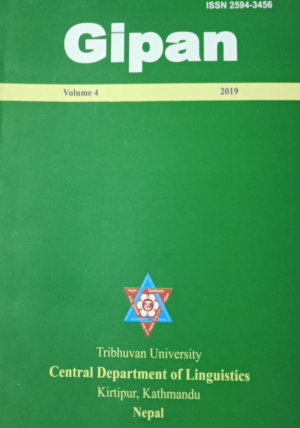Revisiting the morphophonology of Thangmi: a Tibeto-Burman language of Nepal
DOI:
https://doi.org/10.3126/gipan.v4i0.35457Keywords:
Thami, Thangmi, Morphophonology, Assimilation, SyncopeAbstract
This article revisits the morphophonology of Thangmi, a Tibeto-Burman language spoken in Nepal by a community group of the same name whose grammar and lexicon I was involved in documenting from 1996 onwards. The Thangmi (Nepali Thāmī) are an ethnic group who number around 30,000 and inhabit the central eastern hills of Nepal. The Thangmi are autochthonous to the upper reaches of Dolakhā district as well as to the eastern valleys of Sindhupālcok district, and their hitherto undocumented Tibeto-Burman language has two distinctly recognisable and mutually unintelligible dialects. Morphophonology (also known as morphophonemics) explores the interaction between morphology and phonology, and is predicated on a rigorous investigation of the phonological variations within morphemes that oftentimes mark different grammatical functions. While complex, Thangmi morphophonology lends itself to transparent interpretation, and this paper offers a modified analysis that builds on and develops from my earlier work (Turin 2012, 2005). Following a brief introduction to Thangmi segmental phonology, this article covers four aspects central to Thangmi morphophonology: the remnants of what may be a defunct liquid-nasal alternation, a brief overview of assimilation, a robust review of intervocalic approximants and finally a brief note on syncope.
Downloads
Downloads
Published
How to Cite
Issue
Section
License
This license enables reusers to distribute, remix, adapt, and build upon the material in any medium or format for noncommercial purposes only, and only so long as attribution is given to the creator.

